Hayward vs Raypak Pool Heater – My Best Model

Even if you live in an area with frequent temperature drops and cold seasons, it doesn’t mean you should deprive yourself of a nice and warm swimming pool. Modern pool heaters try to keep an ultimate balance between fast heating and energy economy, so you’ll definitely find a decent product.
Today, we’d like to help you and discuss two bestsellers. So, welcome…




Main Differences Between the Models
Surprisingly, there are not so many distinctions between the pool heaters. Below, we’d like to highlight a list of key differences we managed to find in the course of the review:
- The two models use different heating systems;
- The Raypak device ensures a higher BTU rate, so it’s more powerful;
- Also, Raypak 266,000 BTU heater allows users to install additional remote control;
- However, the Hayward heater outperforms its rival in durability and weather resistance;
- If you’re looking for a quiet product, choose Raypak. The unit works with less noise compared to the Hayward;
1. Hayward W3H250FDN Universal H-Series 250,000 BTU Natural Gas Pool and Spa Heater
Hayward H-Series heater deserves special attention due to its simple yet powerful operation. The model was designed especially for large inground pools, which means it can quickly heat a great amount of water. Nevertheless, smaller and more complex constructions like spas will also find this unit perfect for heating needs since you can set any temperature and accompanying conditions.
The main reason for attention here is significant energy care. The H-Series works on natural gas (which is tangibly cheaper than electricity). Thus, the heater saves energy and has mercy on your pocket. And this is a rare thing for a heater, believe us.
Control won’t take you much time, thanks to a user-friendly front control panel. Intuitive LED buttons allow for setting and saving your own temperature, and well as conducting diagnostics. By the way, these features contribute to money-saving too.
Unfortunately, Hayward H-Series will cost you pretty much at first. But the unit seems to be quite durable both inside and outside. Users note corrosion protection, weather resistance systems, and inner protection from failure caused by water chemistry.
Let us also mention a few more drawbacks that users note.
- First, get ready that the unit is really noisy, bulky and may disturb easy access to a pool and the whole view if you don’t have a lot of free space. Anyway, many won’t find it such a big deal.
- Also, the heater needs a pretty accurate water pressure adjustment at first for proper operation without further errors and restarts.
All in all, Hayward provided us with an expansive but very durable and efficient pool heater. Though having to pay a lot at first, you’ll redeem your investments in the future with the following years of reliable and saving operation.
- best suits large inground pools and spas
- works on cheaper natural gas
- saves energy due to reduced circulation pump run time
- allows for setting any temperature
- provides simple, intuitive digital control
- pretty simple installation
- resistant to any weather conditions and water/chemistry impacts
- expensive
- loud operation
- inconvenient dimensions
- requires regular gas level monitoring
2. Raypak 266,000 BTU Digital Electronic Ignition Natural Gas Pool Heater
One more American brand – Raypak corporation – presents us with an almost industrial-level pool heater named Raypak 266,000 BTU Digital. Since we’re dealing with a comparison, let us note that the choice between Hayward vs Raypak pool heaters is often complicated by their resemblance.
The Raypak heater belongs to the same price category and very similar operation method. First of all, we also see natural gas heating, both simple and economical. However, this unit is a bit more powerful, which is obvious from the name. That’s why we recommend it for even larger inground pools and all hub/spa systems. The manufacturer claims that they raised fuel efficiency to a new level.
Your saving may turn even greater thanks to microprocessor-based thermostat control. The Raypak offers a nice digital screen control with a customized temp setting. But most of all, we like its compatibility with most remote pool control systems.
This digital electronic ignition heater is made to resist high-wind, rain, snow. However, real users’ reviews disapproved the statement – unfortunately, Raypaks are more subject to corrosion than Haywards. The improper pH level in your pool may also lead to significant inner breakages, which is a problem.
But despite these drawbacks and a high price, Raypak 266,000 BTU pool heater deserves its reputation. The model heats a greater amount of water, staying as energy-efficient as the Hayward device. You also pay for a quieter and more comfortable operation.
- the heater deals with larger inground pools, all hubs and spas
- requires natural gas for heating and has an improved fuel consumption
- can adjust any temperature
- provides simple, intuitive digital control
- works with major remotes
- ensures worry-free installation
- quieter operation
- weather-resistant body
- expensive
- bulky
- not so durable
- requires regular gas level monitoring
Now, let’s pass on to the detailed comparison of our heaters’ characteristics.
Design and Dimensions
A compact pool heater is a guarantee of neat and convenient installation. That’s why we’d like to discuss the Raypak vs Hayward dimensions.
Raypak 266,000 BTU Digital Electronic Ignition Heater answers with similar characteristics that include:
- 43″ x 31″ x 29.3″ dimensions;
- 210 pounds of weight;
Both brands prefer using durable metals for the heaters, which is quite wise minding their outdoor application. The Hayward applies nickel (especially for heating elements) and stainless steel.
Raypak offers galvanized metal with a unique powder coating to resist corrosion. Here we also notice polymer resin as inner material.
The color scheme is pretty plain, with predominantly grey and metallic parts that serve pragmatism rather than esthetics.
Performance
Despite some differences in dimensions and performance, both Hayward and Raypak work with water reservoirs with surface areas up to 750 ft. Nevertheless, the second device can be applied for more spacious pools, and here is why.
BTU
Let us start here with the description of Hayward and Raypak’s BTU rate. We’ll briefly mention that BTU stands for British Thermal Units that allow us to calculate how much heat we need to increase the temperature of one pound of water (by one degree as a rule).
Thus, the Hayward heater is rated 250 000 BTU. Its rival ensures a bit higher 266 000 BTU result.
Thermal Efficiency
Thermal efficiency is a concept close to BTU. It means how much heat energy transforms into work and how great our energy and heat loss is. Once again, we deal with similar characteristics. The first heater provides 83% thermal efficiency, and the second heater is hardly inferior with its 82% efficiency.
To leave vogue theory, let us mention that such performance allows heaters to increase water temperature by 1-2 degrees per hour if we speak about 15000-20000 gal pools.
Heating Systems
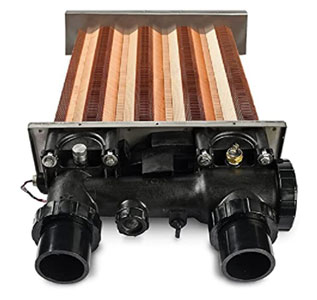
Hayward W3H250FDN Universal H-Series Heater is equipped with a Cupro-Nickel finn plate heat exchanger standard for Hayward heating products. Such an exchanger ensures evener water heating at the same time staying resistant to salts and aggressive pool water chemistry.
Heat losses are minimized thanks to the superior hydraulic performance and the forced draft combustion system. The system makes air circulate through the combustion chamber, thus minimizing side influences (wind, cold air, etc.).
Raypak 266,000 BTU Digital Electronic Ignition Heater uses Rayak branded integral copper finned tube. This is one extruded tube with inbuilt fins. The design ensures maximum heat transfer equal to the performance of commercial heaters/boilers. Add here stainless steel tube sheets, 3D design, and a water flow rate of up to 125 gallons per minute.
If you choose between these two models, you can take any. In our opinion, the Hayward good heats evener and «thoroughly». But the Raypak can deal with a greater amount of water (thanks to higher BTU and water flow rates).
Digital Control
Hayward W3H250FDN Universal H-Series Heater
The first heater ensures quite accurate and easy control. All customizations go through the digital screen. We can actually set any temperature we’d like (within the offered range) with either Up and Down buttons or a keypad on the screen. The allowed set point range is limited between 65°F (18°C) and 104°F (40°C). As you see, we can also choose between Fahrenheit and Celsius, which is a nice option for users all over the world.
The screen provides two modes – Pool and Spa. The option allows for better suiting your heater and basin type.
The digital control also means improved maintenance and troubleshooting. The heater displays basic diagnostic information about the heater’s operation, pressure level, errors, etc.
Finally, control buttons allow us to activate smart and safe ignition as well as stop it immediately.
Please mind that the Hayward Universal H-Series heater does not provide timers or schedules. The unit works 24/7 with periodical drops and raises in heating. While water temperature lowers by more than 1° below the set point, heater sensors activate the heating cycle. Thus you can only completely switch off the unit when unnecessary or for saving.
Raypak 266,000 BTU Digital Electronic Ignition Heater
Raypak boasts approximately the same control options. First of all, we cannot do without a digital screen. Here, users will find electronic ignition, temperature sensor, pressure switch, adjustment buttons, etc.
Apart from usual buttons, the Raypak 266,000 BTU owners may control the temperature with the heater thermostat on the upper front panel. You can also use a special temp control knob. All you need is to rotate the knob between spa temperature range, pool temperature range, and stand-by temperature range.
The heater accurately monitors water temp and automatically increases it when water is below the set point. Once again, we deal with a stand-by model without the possibility of setting timers and schedules.
Like the Hayward product, this tool offers Pool and Spa modes. You can switch between them with a Mode button. The minimal water temp starts from 65°F (18°C), and the maximum range reaches 104°F (40.0°C) both in the Pool and Spa modes.
The on-board diagnostic control prevents accidental breakages and dangerous situations. You can control all errors with the Fault History File and display notifications.
Attention! Raypak’s best advantage is its additional control feature. The 266BTU model is called a remote-ready product since it comes with a 7-pin remote wiring connector. The unit supplies power out to either a toggle switch or the switch contacts of a third-party remote (supports major models for easier fitting).
As you see, control options are pretty wide in both cases. And in both cases, we have a similar set of customization tools. Our only pity is the lack of timers since the non-stop heater’s operation leads to unnecessary energy/fuel expenses. But owners of large pools will find it indispensable.
Fuel Consumption
Almost all gas pool heaters share the same gas consumption and installation features. That’s why we won’t see a big difference here between Raypak vs Hayward.
So, in both cases, all gas connectors are included in the kit. Customers have nothing to buy additionally except for the gas tank. As far as we managed to conclude, there are no official limitations of gas tank sizes. The factor will depend on your readiness to refill the container. However, we do recommend consulting the manual before the final choice for safety.
Originally, Hayward and Raypak heaters work on natural gas, but the manufacturers also allow for transforming them into propane gas models. For this, you’ll need extra connectors.
All gas utilities are located on the left-hand side of the heaters. Though ignition is automatic (electrical), you also have standard manual shut-off valves for the start and prevention of gas leakage.
The gas pressure regulator is preset at 4.0 in. WC for natural gas. The pressure at the gas valve should be about 4.0 in. WC. Users are allowed some adjustments (within the required range, of course).
When it comes to the gas consumption itself, both brands spend about 1 gallon of fuel to reach each 100,000 BTU. Once the pool water is heated, our devices reduce consumption to the minimum necessary for temperature support.
Once again, we face sticking to standards rather than unique innovations. Raypak and Hayward use the same technologies and gas types, and the consumption economy pleases us a lot.
Buyer’s Guide – How to Choose the Best Gas Pool Heater?
Pool heaters can be divided into three main groups depending on the type of energy used. Here we have:
- Electric heaters;
- Fuel heaters;
- Sun heaters;
The gas heaters we’ve discussed in this review belong to the second fuel type. So, let’s focus on characteristics we should consider to heat the water in the pool effectively.
First of all, gas heaters are associated with two factors that you should pay attention to before purchasing a device. Heaters require the usage of a circulation pump. We’d also like to highlight in the very beginning that with gas products, you will have to take additional care of fire safety measures.
Choose only high-quality products, and it’s better to look for heaters with emergency gas cut-off systems, anti-leakage protection, and self-diagnostics.
Conclusion
So, this is it; we came to the conclusion of the Hayward vs Raypak pool heater comparison. Despite different manufacturers, our heaters belong to the same price and performance categories. We notice minimal differences that significantly complicate the choice.
If you want «an immortal» device, pick up Hayward W3H250FDN Universal H-Series Heater. The price is biting, but it will redeem within the following years of application.
Hayward W3H250FDN Universal H-Series Heater is an optimal choice for larger pools. Also, if you need more control options, this device is yours.
At least, we can say that both models proved to be energy-efficient (which is rare for pool heaters), quite smart in terms of control, and lasting.


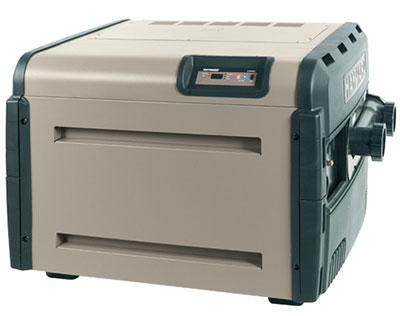
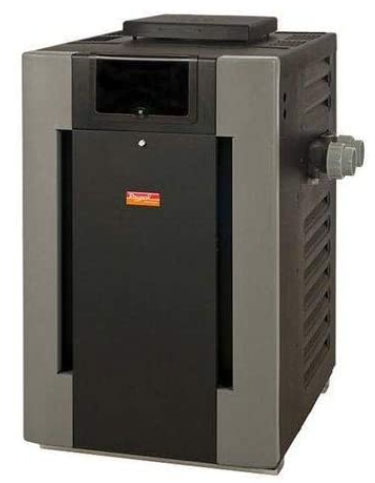


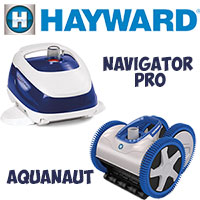
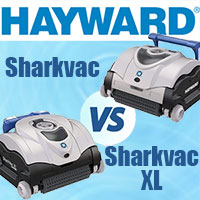
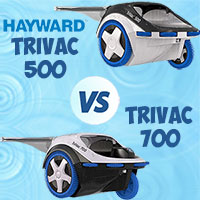
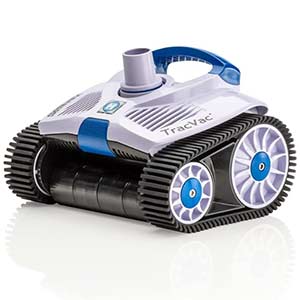
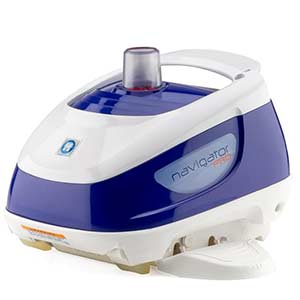
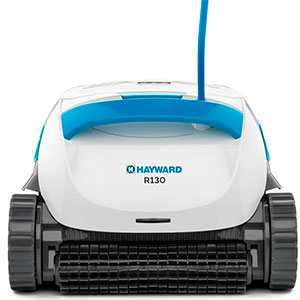
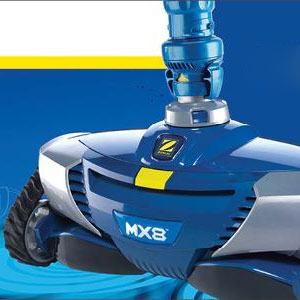
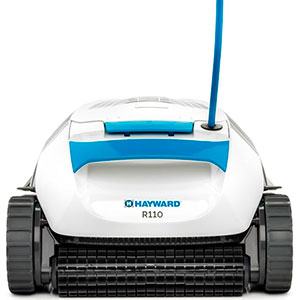
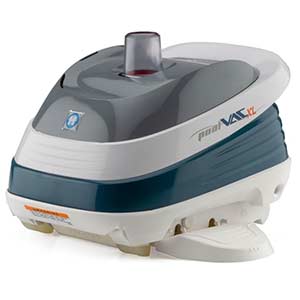
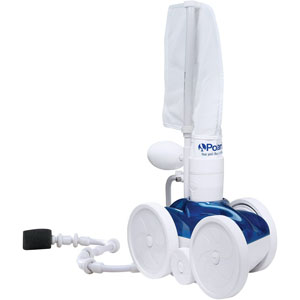
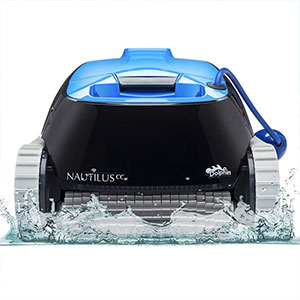
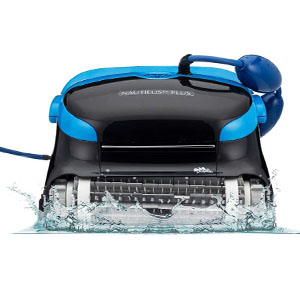
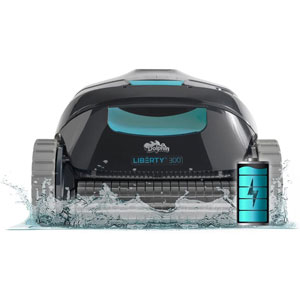
Ben
Hi! How much time do I need to heat a 20 x 40 ft pool with these models?
Marcus Robertson
Hi, Ben! Thank you very much for your question! Both models’ performance allows heaters to increase water temperature by 1-2 degrees per hour. So the time will depend on the primary gallons and water temperature. If you switch on your heater for the first time, we’d recommend waiting for about 12 hours.
Arthur
Hi! When installing the Raypak 266,000 BTU model, do I need to mind it has the left-side or right-side outtake?
Marcus Robertson
Hi, Arthur! Thank you very much for your question! With Raypak 266,000 BTU heater users can have both options by simply switching between left and right-side outtake and intake positions.
Ganesh
Hi Marcus, I have heard that the newer Hayward FDN models have a shorter life than the Raypak models. Would you know if this holds true?
Also, quesiton on the cupro nickel heat exchange system and understanding if I need it or not (Raypak has models with and without them)? I have a cholrinated system.
But have a large maple tree next to my pool, and am constantly battling to maintain my pH levels. Is the curpo nickel something I need to strongly consider?
Thanks,
Ganesh
Marcus Robertson
Hi, Ganesh! Thank you very much for your question! For me it always seemed that Hayward heaters last a little bit longer and provide nice assambling. Frankly speaking, we do not have any reliable info on Hayward FDN service life at the moment, so I can only be guided by the previous Hayward usage experience which was quite pleasing. However, our team will be really grateful if our readers can share their own experience.
As for cupro nickel heat, it seems as a very worthy investment, especially if you have to use lots of pool chemistry for healthy water. I think the price difference between the simple and cupro nickel options is not that dramatic while the service life is a weighty argument.
TonyAntony
Hi, nice review thanks) just one moment, you once mentioned Hayward W3H250FDN heater has a screen and remote although there is no remote included.
Marcus Robertson
Hi, TonyAntony! Thank you very much for your comment! The point is corrected)
Mari
Hello! I’m looking for a pool heater, but I have a robotic cleaner. Are these two models safe for pool cleaners? Are there any restrictions concerning maximum water temperature for a pool with working cleaner?
Marcus Robertson
Thank you very much for your question! Pool heaters are safe for cleaning machines since no heater can warm water to such high temperatures that can seriously damage a cleaner. However, we recommend checking manuals beforehand and do not exceed the set numbers. Also, do not use a heater and a cleaner at the same time.
rrr
I like extremely hot water. I like the spa also, but the most pleasant is swimming for 5-10 minutes in hot water. Is it possible to heat it with a Hayward or Raypak heater at an upper temperature of 104oF?
Jennifer Meadors
Hello rrr! Thank you for your question. Even though public baths have higher temperatures in some countries in the United States and Canada, it has been forbidden to heat water in spas higher than 104oF since 1980. The reason for that is to protect the health, as heart strokes can be caused for a long presence in water higher than 104 oF. Additionally, for pregnant women, kids, or people with health problems, the duration and temperature should be agreed upon with a doctor in advance. Raypack and Hayward heaters are produced based on all North American codes and standards, so 104oF is the highest temperature.